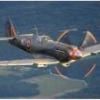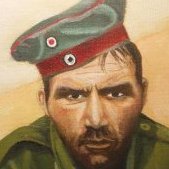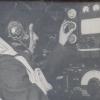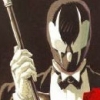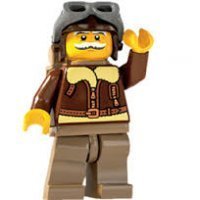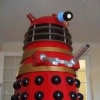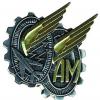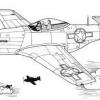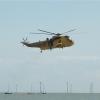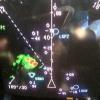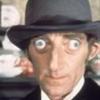Leaderboard
Popular Content
Showing content with the highest reputation on 20/05/17 in all areas
-
My very first jet. Yes...after almost 40 years of this hobby I have finally built something without a propeller. I was astounded at the kit, actually. Talk about tight fitting pieces! Amazing. They must be molding their plastic with lasers. I really enjoyed this build and, as a big fan of Cold War history, this is a must for me and any other aircraft hobbyist. In fact, I have become so enamoured with the early Migs that I have ordered the Quattro box from Eduard and also some Mig-17 kits from AZ Models. Something about all those uses in the Middle East and Africa... I used plenty of sources for modelling and weathering from the interweb, some of which I think was from this site. Thanks folks! --JDCM18 points
-
Hi all. The old Tamiya updated with some goodies, not bad for a 35 years old kit!14 points
-
Something post-WW2...The Revell Stearman Kaydet in 1/72nd scale, used in Israel in the late 40s and 50s as a training aircraft. The build is OOB, with only the rigging in .004 line (drilldrilldrill) and Vallejo colors. the decals are aftermarket from a wonderful set made by Xtradecal. Among the options are a Nationalist Chinese and Peruvian craft (that's next) as well as several US birds. I feel that when I find a kit that builds OOB easily and without fuss, I stick to the manufacturer's designs. This is a good example. An easy kit, some descent painting and lovely, thin perfectly registered decals make the model a bit more special. Hope you like it! --JDCM13 points
-
Hi, I got this kit cheap, but had to really force myself to finish it. The kit is fine, I just couldn't get excited and halfway through the build decided to rush through and finish it. It shows. Like many before, it'll go to one of my wife's pupils as a reward for being a good student.12 points
-
Douglas DC-4 - 1:144 Minicraft Aer Turas decals - classic-airlines.com This is the lovely Minicraft DC-4 kit, with decals from classic-airlines,com. The decals are laser printed on constant film, so need individually cutting out.They do some wonderful schems from the 60's and 70's, I just can't resist buying them! I'm deveoping a real liking for Irish aviation, as well as the smaller independant airlines of the 60's, so this one scores on both counts. Having seen Ian Turbofans beautiful British Eagle Brittannia, which he photographed using a hairdryer to spin the props, I thought I'd do a couple of photos like that myself! 'With something else' - its' close relative the ATL Carvair, in real life actually converted from a DC-4. Also has classic-airlines.com decals. Thanks for looking John11 points
-
Hi Folks. Here is my interpretation of a 1/72 TF-86 Sabre Trainer, build here: http://www.britmodeller.com/forums/index.php?/topic/235003834-172-tf-86f-sabre-trainer/ This build consisted of the Falcon Vacuform Conversion that uses the Heller Sabre as the donor but I also used the Hobbycraft kit for mainly the wings which had to be converted back. Painted using Humbrol Metalcote. Kit decals were used but serials had to be DIY as none exist in this scale. Came out better than I thought after a few setbacks and their is always room for improvement. Hope you like. Stuart11 points
-
For your perusal...HR Models Hanriot HD-2 floatplane. This was a nice little kit but needed a certain amount of TLC and skill to build. The instructions were rudimentary but sufficient and I ended up using plenty of on-line sources for the rigging, alternative views and weathering. I love making early floatplanes and aside from this kit (and others from HR), the Roden Albatros W-4s, and a couple of other more obscure kits, there aren't a lot out there in this scale. The rigging is a mix of .004 fishing line ( which means a lot of drilling!) and some stretched sprue for the little bits. Paints are all Vallejo and the decals are OOB, as is the build. --JDCM11 points
-
Riding on the back of my last build ( RB.57E ) I'm going to do the same with the PR.3. So starting with the Airfix B.57 fuselage, wings, tail and rudder from the old Airfix B(I)6, parts from the Italeri B.57, Matchbox PR.9 and Aeroclub's brilliant replacement nose correction set plus some other resin bits. So to start, the components. As with the B.57 I'm planing to re scribe all the detail, so that should be fun! I may open the flair bay too but I've not decided that yet or indeed what colour scheme she's going to end up in.10 points
-
May I present... Col. Robin Olds P-38J Lightning, SCATII On my Honeymoon last year I took with me 'Fighter Pilot', which was an incredible read, easily one of the best biographies I have read and decided that I would pay tribute to Col. Olds with either a P-51 or P-38, as I had already built an F-4 Phantom earlier that year. I decided it had to be the P-38 after a memorable passage in his book where he talks about downing an ME-109 in a glide, due to dropping the external tanks but forgetting to switch to the internals! With the aircraft chosen, that meant scouring for a decent kit and decals. After doing some research I settled on the Academy kit, but unfortunately in 1/72, was nowhere to be found and I thought that the project would probably not start. However at the tailend of last year I noticed a kit made by MPM on Hannants and took a gamble after the description said it was an Academy moulding. I found decals by Kits-World for SCAT II and when the postman delivered the goodies I nervously opened the MPM box... fortunately all was well and some crisp moulded plastic fell out with 'Academy' on the sprue! For those interested, the WIP thread is here: It's been a labour of love completing one of my favourite aircraft of WW2. My last attempt at a P-38 was well over 20 years ago, where I built an Airfix Lightning. Hope you enjoy!10 points
-
10 points
-
'Give me the power -of man's red flower, So I can be like y-....ah, there you are modellers, Good afternoon! I hope that gets resolved in a non-draconian manner for you and your colleagues James. Ah'm reet glad it's giving such vicarious pleasure Bill. 'Two months and it'll be done' I told myself back in early March when we embarked on this. The worst thing is that the latter Hercules variants they moved on to for these satellite recoveries look even more attractively Ice Station Zebra-ish in nature.... Please don't try and raise the tone of the thread Nigel - there are two many miscreants here for it to work! Wotcha Steve! My thanks for those pearls of wisdom - you make the process seem eminently clear and straightforward. From what you say above, and from Bill's notes also I reckon it's sensible then to carve a balsa master as if plunging the whole thing, that way if it doesn't work out as a singleton, I can split the job into top and bottom moulds, rejoining along the lines you outline here. So is dentistry to a sadist. Bill, I'm sorry I didn't pick up on your kind offer the first time around - the prospect of gateaux clouded my social antennae I expect. I'll have a rummage around home and work over the next few days and if I don't find any likely candidates, I'll be happy to take you up on that kindness. It'll be a week or so until the balsa gets here, so in In my current state of blissful ignorance I reckon a test with a triangle of wood and some plasticard might be prudent, just in order to get a feel for tolerances. Having a hiatus on the BT probably isn't a bad thing as it'll now force me to concentrate for the present then on outstanding building tasks for the cargo area, and have a general tidy-up to get it ready for primer and paint. With that in mind I got down to business earlier on such matters. One thing which has been bugging the hell out of me is the fact that I wasn't happy with the port retrieval pole actuator - both in yaw and pitch it just didn't feel quite right. This hunch was confirmed when taking into account where the various hinges and pivots for the BT mount to the fuselage wall. The collar that the pole slides into was about a mm too close to the wall, so I reckoned some drastic surgery was needed to avoid future complications. Out it came: A new mounting built completely, and reinstalled: From the photo you probably don't see much difference to what it looked like before, but trust me that's better now. Once satisfied with that, attention swung to the derelict main roof, which needed some indicative detail down the main opening that I'd cut out some time back. Here I simply replicated the positions of the stations on the fuselage wall and added some cables: ...before belatedly realizing from reference shots both looking out from - as well as into from outside - the back, that it wasn't that straighforward. Partly - as you've no doubt anticipated already - this results from the presence of the wing spar area, rather than just a continuation up and over of the existing fuslage stations. With no sufficiently illuminated shots at all for the whole length of Pelican 9's roof therefore, I settled on what was visible, plus the commoinest elements that showed up most in other contemporary photos of the 'J' interior. To make the parallel fabric-like runs that go down the length of the opening on either side of the paratainer rail, I was rather taken with this wire and foil twist left over from something Italian and edible at Christmas: Cut down into two 3mm strips, it answered rather nicely: With some new cabling added, that's stylishly Italian now: Adding the paratainer rail temporarily just to give you a hint of the final result (Albeit the wrong way up at the moment...): Getting there: Oooh, I'll have to sort out that nasty bow in the rail. That, as well as other bits like the ladder, sheaves etc etc. will be left off until after painting these regions, just to avoid making the painting any more complex. It always feels better after a tidy-up doesn't it? Tony10 points
-
I whipped the new frame and several lengths of plastic strip and rod down to the gara... spray booth and gave them all a couple of coats of Humbrol's Arrow Red acrylic aerosol Let the stink gas off ("What are you doing just sitting there doing nothing..........!") and brought the rig indoors and began having a stress free hour or two Modelling, almost forgot how nice it is/can be Began by sticking the vee frame in situ (Formula 560 Cockpit Glue), then after the tail upright pylon fell off ( ) I used the opportunity to get the blades and frames singing from the same song sheet (looks like Wednesday Morning 3am to me, one of the Talented Mr Simon's early works) As I built it all up and boxed in the blades it became a thing of, yes, beauty Look at that Yes on this shot you can see some of the warts, the tail hinge ratchet has dislodged (now fixed) and one of the assembly spring lock rings awaits its coat of red But the tail pylon beacon is at the right position now with rotor blades easily located either side from ahead she looks a lot better now too And from the port side Things to do before RFI Wipers (Airwaves set might do this for me) OAT Tie down rings on upper legs tie down to the deck Wish I had left the rotor gear alone, folded you cannot even see the blooming little donk nightol10 points
-
Hi, here are a few pics of one of my last builds, a Lagg-3 built essentially from the box from ICM. The only change was lengthening the fuselage by 3mm just after the main radiator exhaust. The paints are Gunze, red stars are airbrushed with masks. Weathering was done with Mig ammo washes, various pigments and ink pens. Hope you will like it, Christian.9 points
-
Good afternoon you lot. I don't know what it is but there is a point in every build these days where I slow down, mulling what to do next and almost not wanting to see everything finished. I think I passed the threshold today by getting the last few bits ready for assembly. I'm currently making s veggie lasagne and drinking wine so it looks as though she will go together tomorrow. Here's what happened today. the Wonderful brass guns came out of the package. these ones had to be assembled. the little one almost got fed to the CM, luckily it boinged right pack onto my cutting mat. together at last! the prop hubs got a base coat of yellow. I'll pre shade before the red goes on. Here are all the last little bits primed and ready for colour. (The tyres are done) Waiting for that to dry I masked the canopies. Then base coated in green. Ahhhh lovely green, for the inside colour. then most of the little bits got there final coat. Prop hubs still to go. right as I said, dinner is taking priority right now. More tomorrow, I'll try the secret lemonade drinker. thanks for dropping by. Hope you're all having a lovely weekend. see y'all tomoz. johnny funk!9 points
-
8 points
-
First time posting in a while This was my first attempt at a WW2 German aircraft. Really enjoyed the Airfix kit. Lots of nice panel lines, easy to assemble and really well priced. The only downside is that no Swastika decals were included, too PC in my opinion Airfix.7 points
-
Evening all Calling this one done, Acadamy 1/72 P39Q in Portuguese marking from June 1942. Used Eduard PE for cockpit and flaps, LF model decals, Tamiya and Revell acrylics. The LF model decals are very nice for the price. Reposted with pictures after the Photobucket shut off. IMGA0896 by neil Connor, on Flickr IMGA0897 by neil Connor, on Flickr IMGA0898 by neil Connor, on Flickr IMGA0899 by neil Connor, on Flickr IMGA0900 by neil Connor, on Flickr IMGA0902 by neil Connor, on Flickr IMGA0905 by neil Connor, on Flickr IMGA0908 by neil Connor, on Flickr7 points
-
Another of those rather unsatisfactory posts where a great many hours have gone into the model for seemingly little effect. I have continued with working on the light and shade in the cabin area and I guess that is where most of the hours put in have gone. More visible are the netting that covers the access to the rear fuselage, that was a bit of a pig to do and I have painted up and fitted the rudder pedals. Some photo-etch action saw the last of the Eduard detail parts added to the flight deck. I think that I need to be getting the cabin windows sorted out next and possibly the main canopy interior as well. Sorry for a post somewhat lacking in "bling" but thanks for looking anyway. Martian7 points
-
Hi, everyone! I present you my next model - French heavy fighter prototype of WWII. It's full resin kit with vacuumformed canopy.6 points
-
Kit - Trumpeter 1:48. Paint - Alclad lacquers, AK Xtreme Metals, Xtracolour & Humbrol enamels. Decals - Microscale & Superscale. Extras - Hasegawa 750lb'ers, Quickboost resin seat, Eduard pre-painted etch. NA F-100D Super Sabre 'Pahodee Tiger' 308th TFS, 31st TFW Bien Hoa AFB Mid 1965. Here’s my just completed Trumpeter 1:48 ‘Hun’. What a kit !!, simply fell together with almost no input from me. Only additions are a Quickboost seat and Eduard pre-painted etch set for the pit – neither of which are actually ‘needed’, simply a concession to middle-aged sausage fingers !! Not too much to say about the actual machine except that it is said to be assigned to Don Kilgus’ wingman in mid-1965, and despite my (and others) best efforts, just cannot find the name of the pilot. If the scheme is familiar, it may be because way back in the very late 1970’s Esci featured it for their (quite awful) 1:48 kit as the box-art. For my model, I’ve used an ancient MicroScale sheet for all the stencilling and a more recent SuperScale sheet for the aircraft specific markings. Overall aluminium paint is Xtracolour enamel, the heat-scorched NMF area around the engine is a combination of Alclad lacquers, AK Xtreme Metals and Tamiya clear blue & orange. Thouroughly enjoyed every minute of this one. Thanks for taking the time to look and/or comment. Next, a BoB Hurricane or AVG P-40. AFN Ian.6 points
-
Hi Everyone, Just put the finishing touches on my `Easy Build` Hobbyboss 1/48 Huey Which I painted up in early US Army camouflage, inspired by a photo of a `B` model Huey of the 117th Aviation Company, based at Ban Me Thuot in the early 1960`s..... ...I found in Squadrons `US Army Aviation in Vietnam book. It really was an easy build but some people may not like the lack of some details, for me, I just added: seat belts, cyclic stick, a bit of cabin roof detail , sanded the ends of the skids into shape....... ....added footpedals and some hydraulic lines. I did manage to make life a bit difficult by not adding any nose weight and had to cut the nose off and add some. Decals were some from the stash and some from the kit. Hope you enjoy, thanks for looking Cheers Russ6 points
-
Well its been a while since my last update on this, mostly because I had a bit of a disaster, dropped the model and cracked the nose. This led to reappraisal of the situation, and I decided that if this was going to get finished I would need to replace a couple of parts with new ones, namely: a new fuselage from Hasegawa! I reckoned I could get the KP wing (which I think is very good) to fit so decided to give it a try. So step 1 was to use plastic card to replicate the nice detail of the KP cockpit walls in the rather sparse Hasegawa fuselage, fit the KP floor and seat, add a fuel tank/radio from a broken Airfix D model, add the KP tailwheel well and radiator, and stitch the whole thing up. Step 2 was to fettle the KP wings so they fitted the Hasegawa fuselage, trim back the incorrect Hasegawa leading edge wingroot extensions, and put it all together. The Hasegawa fuselage it a bit short in the tail department, but everything else looks OK. So step 3 was to remove the Hasegawa rudder, then remove the fin and move it back about 1-1.5 mm, fill the gap with plastic card, and refit the rudder. So here's where I am today. I put some card behind the exhaust openings to avoid having to glue the exhausts in before closing up the fuselage, as Hasegawa would have one do. The prop is from that broken Airfix D model I mentioned above, but it dry-fits beautifully. My mojo is more or less restored on this: just a bit of rescribing to do around the lower cowling, do some rails for the Malcolm hood (though I'm still undecided on whether to use the original framed canopy or the Malcolm hood) and it should be ready for priming soon. Justin6 points
-
Well folks as John (Viking) said 'the more the merrier' I thought I would add another picture or two of my Camel build as Viking is a very busy man and says he won't be able to get much done on his this weekend so I hope you enjoy some images of this great kit coming together. I should have the completed model in an RFI by the end of the Weekend or early in the coming week.6 points
-
Thanks Giorgio Finally, in the Gallery. Thanks to everyone who's stuck with this and provided support, help and company - it's really appreciated. This has to be one of my longest builds. I guess it's mainly the figures and the blue, oh the blue! Before I get back to Jason, some shots I didn't use in the gallery, just for you guys: Close up of the pitot: Door handle - look, see it? Two part insane PE: I'm going to have some lunch now and then a lie down. Tired after all that fiddling.6 points
-
DH89 Dragon Rapide G-AKIF Classic Wings, Duxford 1/72 Heller When Procopius was over here for the BoB 75th we met 06/24 at Duxford and had a trip in the Rapide. I bought the Heller kit there and promised to build it as the one we flew in. I wish we'd flown in something easier to model! One of my longest WiPs ever here. Loaded with awful figures from a cheap railway set, with apologies to Brian (the pilot), Procopius and 06/246 points
-
Started on 1st April 2017 Finished on 21st April 2017 My absolute favourite build this year and a most long awaited model of a British Classic from the last 40+ years There are some hidden twists in the box as you can build almost any vehicle from the 1970's to the 1990's but the parts that should be used/not used are not made clear. If you want to see more, the full build is here5 points
-
Horatio Gruntfuttock wrote Posted yesterday at 12:45 AM · Report post Two lovely clean builds there and I do like the scenes you have set them in. Now, given your background, we need a Manchester as well! ----------------------------------------------------------------------------------------------------------------------------------------------------------------------------- This is an Airfix lancaster kit converted to a Manchester some time ago. The wings were reduced from the original kit wings as were the tail-planes and rudders. The Vulture engines were entirely scratch built (still require suitable cowling for the tops of). It was a case of while you are building one, why not two ?? . . . .three ?? QL-Q Queenie of 83 squadron Mk. 1 A-Able & M-Mother of 207 Squadron Mk. 1 & Mk. 1a True to the facts, because there was real concern about the Vulture engines there was a Spec. issued for a replacement engine powerplant and the Napier was suggested. As part of a 'WHIF' build I produced a twin engined Manchester with Merlins !! . . .5 points
-
An old friend asked me to help him finish the Fokker Dr 1 1:8 Scale model that's marketed by Hachette Publications. He had a passion for starting models which frequently got to a certain stage when he was overtaken by a new project. I was intrigued by the big model and its skeletal format and took it over for him. It soon became evident that the kit's attention to detail was rudimentary, a real issue on such a big scale for anyone who has a hankering to get as much of the detail right as possible. Being so afflicted, after taking delivery of all the bits plus the finished elements he'd already made (Wings/part fuselage/tailplane/rudder/engine), I spent many months and no small investment on bits to bring it to the finished item. It's not museum standard even so but looks quite convincing. Loads of fiddley bits and accompanying graphic epithets. I decided that to change the OOB structure to something fairly authentic, it had to be an earlier Dr 1 than the Red Baron's a/c that Hachette had used to market the kit, so hunted for something appropriate and found 147/17 (W Nr 1859) which was delivered to Richthofen's Jasta 11 in Nov 1917 after the Triplane series was temporarily withdrawn from service due to fatal structural problems with the wings. It was then reputedly flown by Lt Werner Steinhäuser whose markings (cribbed from our NZ friends) I used as the basis for the a/c's bright paintwork on the covered parts of the structure. He had 4 victories to his credit before being wounded in combat on 17 March 1918 while flying Fokker Dr 1 147/17. There were 6 more aircraft added to his total before he lost his life on 26 June 1918 in a later model Dr 1 (564/17) due to the accurate shooting from a SPAD 2-seater. Steinhäuser’s first triplane was flown after his injury by a Jasta 10 pilot, Leutnant Ludwig Keseling, who had the misfortune to be shot down by AA fire while strafing observation balloons on 22 March 1918. He managed to force-land his damaged aircraft in Allied territory, becoming a POW. His aircraft was subsequently pictured being recovered by British soldiers. It was eventually given the British captured aircraft identification code G.158 but its fate remains unclear. My friend was well pleased with the result and insisted I should keep the model since I'd invested so much effort into the finished article. At 85 years old, he sadly died. Since the model was really too large for me to display, I gave it to his son who lives down in Paignton but the photo collection of the finished model reminds me of my chum. Finally got to grips with downloading pictures to the site so apologies to anyone who may not find this their kindathing.5 points
-
Okay so time to get back on with this guy! Ive been sorting out the shoulder pad on the other side, and just generally trying to neaten them up and even them out. 20170515_132331 by Nick Frost, on Flickr 20170515_134247 by Nick Frost, on Flickr 20170515_134308 by Nick Frost, on Flickr 20170515_134531 by Nick Frost, on Flickr 20170518_131010 by Nick Frost, on Flickr 20170518_131142 by Nick Frost, on Flickr 20170518_131715 by Nick Frost, on Flickr 20170518_131949 by Nick Frost, on Flickr And i also have been trying to sort his back out as its had the least attention so far! 20170519_132424 by Nick Frost, on Flickr I rolled out a flat bit of sculpey, as a start for creating a flat base for his jetpack and I had to make a cut in it to allow for the armature stand, then i trimmed it. 20170519_132526 by Nick Frost, on Flickr 20170519_133240 by Nick Frost, on Flickr And i also want a slightly shorter chunkier collar bit to mold into the back piece. 20170519_133508 by Nick Frost, on Flickr 20170519_133543 by Nick Frost, on Flickr 20170519_134024 by Nick Frost, on Flickr 20170519_134030 by Nick Frost, on Flickr Obviously this is just stage one i want to build it up at the edges and create a flat platform. With the sides im planning on making them like the padded joints which i think will look cool and will make my life easier. Next I'll build it up more and level it off. Thanks for looking, more soon5 points
-
And with the camera recharged I was able to get a bit further. Academy give you pretty good decals for the instrument panels, in my opinion. Here are the cockpit tubs. The Airfix skyhawks look a lot better with the decals applied. And here are the aviators themselves! Painting those helmet designs really tested the steadiness of my hands, as did giving Goose and Viper their mustaches. The cockpits went together nicely. I had no issues whatsoever with getting the Airfix pilots into the academy seats, other than a little bit of a tight fit around the instrument panels. Here are some close-ups The Tomcat is ready to have the two halves of the nose put together, but the Skyhawks will need a bit more work before closing up since that will also enclose the engine intake and the exhaust nozzle. I'm trying to keep these progressing at the same rate, so the F-14 is going to wait a bit for the Skyhawks to catch up.5 points
-
So i have begun working on the Emil today. There is a marked contrast between this Tamiya kit and the Zvezda Fredrich I'm also building... The Tamiya kit is nicely detailed but simple with few parts. I have been working on the cockpit today and added the replacement seat from Ultracast. here are a couple of shots of it painted up and given a light wash and a bit of weathering... The ultracast seat seat painted up nicely and with a wash the belts look very good I would recommend this to anyone building a Tamiya 109 or the Airfix one... ill seal the fuselage up and get on with the build tomorrow... cheers Plasto.5 points
-
Thanks Rob and Mike! I moved the completed build to Ready for Inspection. I forgot to hit Submit Reply a few days ago...sorry.5 points
-
Great to hear - I feel quite evangelical about this book... Thanks for the vote of confidence also! This is turning into yet another build involving learning another new technique (plunge moulding). Nobody told me modelling would turn into a lifelong medieval guild apprenticeship.... That reminded me to look for the decals for this and I haven't a baldy notion where I put the damn things... That were my thought initially too Bill, however in printing out profiles to make card templates from, I discovered the fusealge cropss-section at the rear is only horizontally symmetrical, not vertical: You can see in the contact print above that there's a greater degree of roundeness to the corner curve on the upper works, whereas the bottom profiule is less pronounced in terms of corner-curves. Once I looked back at the reference photos above I should have noticed that to begin with. Sudderfuddermudderrudder... Now I have to make both port and starboard sides. Oh well. T'would have been easier to be able to mate top and bottom along the very back of the BT but never mind. Again using a contact print for the lateral profile, I continued (as you mentioned previously Bill) the existing curve of the fuselage out symmetrically to create the squid-beak that is the BT: From measurements I worked out the the BT on the 'J' extends back by a third more than the stubby 'G', which IIRC at this scale took it from 30mm to 45mm. Port cross-section cut out and offered up: Squid-beak also: Ah! @hendie - your post popped in just as I was writing this - and possibly saving me making a foolish mistake to boot! I've never ever ever done any plunge-moulding before - given what ye see of the shape of the rear doors, you reckon that will plunge as a single shape then (presumably if plunged from the very rear angled join forwards to where it opens out to join the fuselage)? Does that mean I can sellotape these back together again: You'll have to excuse my abysmal engineering ignorance about the fillet/flap matter - but if I've understood your query then there's no actual split in the doors right at the back where top and bottom meet in the middle (like the beak of a bird). In the last of the two reference pictures above, you can just make out a ramp in the underside that opens up and inwards from the rear, whilst the whole tail-door structure itself tilts up as well. It's a two-stage affair, I think primarily to let the poles down at the required angle whilst allowing for maximum visibility backwards out of the aircraft when reeling in the captured payload. I initially had the impression that the C-119 was responsible for a lot more successful recoveries of Corona capsules, but it wasn't in fact all that long before they transitioned to using C-130s, and their rigs, although similar in appearrance externally, were a whole lot more sophisticated on the inside. The C-119 system I'm building here was something of a legacy system from the Genetrix balloon program. There's a USAF interview with Lt. Col. Mitchell (the pilot of Pelican 9) where he discusses these matters in greater detail: http://www.nro.gov/foia/declass/WS117L_Records/129.PDF As to chair size - it was definitely 'knees-up Mother Brown': http://www.alamy.com/stock-photo-interior-of-the-twin-engine-tactical-transport-fairchild-c-119-flying-89497007.html Being a fully kitted-out paratrooper cooped up with the rest of your stick on those deck chairs for any length of time, it must have been an uncomfortable enough postion to maintain that leaping out of the aircraft must have seemed like quite a relief... As to that tail, it's a squid beak not a duck bill. Anyone'll tell you. Oops, missed this when I hit 'post' Bill I think the pics above illustrate the reason why I started there on port/starboard, not top/bottom. The only thing that worries me about doing a single plunge mould is the length of that shape from back to front...would plasticard actually stretch that far before breaking/tearing? Like I said I've never tried the process and can only go on what I've seen others do for canopies... No balsa wood to be found in this blighted locality so I may have to order some and it'll be a few days. At least there's the roof to be going on with.5 points
-
The front sliding doors should have centrally mounted door handles. I estimated they should be about 1.7mm long, after a search through my PE spares box I located some suitable candidates. First I scraped off the nickel coating ready for soldering: This was my set up for soldering to some 0.4mm rod: Next I punched out a 1.8mm diameter disc of 0.25mm card and glued that on then drilled it out (0.5mm). After I had shaped the handle with sanding sticks it got glued in place: Here are both finished doors. I have also added a sliding rail to the bottom of the door aperture using 0.5mm square strip: This is what the sliding doors look like: Next I finished off the framing on the other cockpit side. The external foot holds should protrude into the cabin, to simulate this I shaped some 1mm card: This reference picture gives an idea of what I was aiming at: Here are all four installed: I think those are nearly ready for some paint. Bye for now, Nigel5 points
-
I spent a little time this morning (which idiot says there's nowt to do when retired huh?) sorting the weapons rack/dispenser/thingy and tidying up the type 44 No reason not to hang it underneath now is there? So I did and then I decided to pin the rotor blades to the MRG, after all I'd be a proper pilchard if it didn't work out huh. One thing led to another so I stuck the Wasp to her deck and had a faff about with the blades Uppers in place, Wopsie sitting inside her prescribed circle/square Some reason for concern, but not a lot over the upper frame Looks to me as if the upper rest pads are too close together but I'm pleased with her so far YES I KNOW!!! The rear UHF aerial is shown here on the wrong side I've moved it over to t'right side since then I think that when the upper arm has been lengthened to allow the blades to sit either side of the beacon as they should the lower pads will allow a better sit too The pins need tidying up but they seem to be reasonable, they do work after all And coming soon, very soon Decisions decisions... The S1, Bucc's fizzzzz After Bill's S12 epic in anti-flash white I've a mind to go for DSG and White One of each choice on the dec sheet....5 points
-
Hello everybody, attention please for all parents and grandads who want to surprise their children and grandchildren. LEGO's countdown for its NASA Apollo Saturn V model set is running ... The most powerful rocket ever flown will go on sale on June 1st, the set is approx. 1:110 and costs 119.99 EUR. Based on a fan submission to LEGO Ideas by Felix Stiessen and Valérie Roche (saabfan and whatsuptoday on the Lego Ideas website) , the 1.969 piece moon rocket stands more than 3 feet tall when assembled and can be separated into its stages. The set also includes microfigures to scale with the Saturn V, a lunar surface and an ocean surface to display liftoff to landing to present. Source: collectspace.com The two LEGO freaks first proposed their Saturn V in 2014. The project received its 10.000th vote in November 2015, qualifying for it for a review by Lego's professional design team. Finally their set was given the "go" to launch as an official product seven months later. After it was approved, the LEGO design team, Michael Psiaki and Carl Thomas Mirriam, took over the project, in order to ensure it lived up to LEGO quality standards. Source: shop.lego.com Source: collectspace.com Although recommended for kids from 14+, I think that my grandson Max with 12 will also create this awesome model, especially since the kit next to the 12 bulging bags also contains a superbly illustrated construction manual (182 pages), Source: brothers-brick.com otherwise the grandpa must help.4 points
-
My first diorama post... Used baby powder for snow effect which I think came out quite well. Diorama is meant to show a German PAK 38 in action on the Eastern Front.4 points
-
HI All Frankenstein's Canberra? for a long time I've been wanting to build an accurate B.57 in 1/72 addressing all the issues with the Italeri kit. So I did just that and this is the result. I've used the parts from the Italeri kit mostly the forward fuselage/nose, the rest of the fuselage is Airfix, the wings are FROG with bits from the Italeri kit. I also accurately scribed the detail. For the full build, it's here RB.57E WIP The paint is Halfords Nissan Silver, with panels picked out with various shades of silvers brush painted, decals are a mix of Extradecal and spares box. And a comparison between the unmodified Italeri B.57B and my effort John4 points
-
Hi Here is my last build with this Italeri 1/72 Short Stirling B. Mk I N6103 of No 149 Squadron in 1941. Nearly from the box : I've just added some curtains, modified the bottom of the engine nacelles and put the main under-carriage at the end. Soon to be published in Tamiya Model Magazine French Edition. Patrick4 points
-
A bit ADD keeps me bouncing from one project to the next. So here I decided to finally build this kit. I used bits from the MR Modelbau update set. Still needs a few bits added and then a little dust and grime to tone it down a bit. Very easy build, low parts count and I think it looks the part though I can't vouch for the accuracy.4 points
-
Hi all, Here are a few shots of my French Spit 9. I performed the basic mods/enhancements such as: Fuselage - cockpit door cut out and replaced with Ultracast resin door - kit seat replaced with Ultracast resin seat - kit exhaust replaced with Ultracast resin exhaust - kit prop and spinner replaced with Ultracast resin parts Wings - wing cannon barrels drilled out - fresh air intake drilled out - under wing IFF antenna added - kit wheels replaced with Ultracast resin wheels - elevators repositioned Paint and Decals - airframe painted with Xtracolor X1 RAF Dark Green BS241, X6 RAF Ocean Grey, X3 RAF Medium Sea Grey BS637, X103 Insignia Red FS11136, X124 Blue FS15109, X141 White and X106 Insignia Yellow FS13538. - all national insignia are painted on, while remainder of markings are from Hussar Spitfire Mk IX in Color - model is weathered with chalk pastels References - Aero Detail No. 27 Vickers-Supermarine Spitfire Mk.VI-XVI - Model Art No. 387 Supermarine Spitfire - photos of MJ897 found on Internet The decals are printed by Techmod and usually I have nothing but grief when I use Techmod decals, but these were absolutely wonderful to use, with no troubles whatsoever. Cheers Randy4 points
-
Thanks Flyingdutchman. I applied the lights and shadows. Some parts are still missing because only now, after removing the mask, can I mask them. Regards ajcmac4 points
-
Things have been a bit slow with the Dominie lately, but somethings are moving now. I have given the engines a coat of P38 & started sanding back to sort out the shape. I have an idea for the main undercarriage wheels and that is moving along - nothing to see yet though. I have posed it a few times with the Hawk and tried it again. Looks quite at home really Got impatient to get some paint on so what do you think? Wings are still only pushed on Bit of overspray to tidy up, the tail to spray, but it brings it a bit more alive4 points
-
OK folks, primer is on, the upper surfaces. And she does not look to bad. Nose area, still but will check once the undersides are done. Those panel lines look like they need a tidy. The slime light need s run of TET but other than that OK. And the other side. I hope to get some more done tomorrow . Once done I can try out the cunning plan. All comments welcome. Simon.4 points
-
My lords, laydees and gennulmen I regret to inform you, and indeed the huddled masses there're a couple of missing things. I had the wind deflectors in the Airwaves kit, good idea thinks I, but 'they' advise using a clear film behind them Durrrgh! Not going to work for me, I've even tried Krystal Kleer which was too thin to stay levelled and 560 glue which was too thick and blobby I could visualise pink and yellow spots appearing when I turned my back... So I am making two new side screens out of thin acetate This helicopter may not get side screens Don't tell anyone if you notice they're missing, oke? The frames are ludicrously thin and will have to be careful masking work I'm going in It might not be me that emerges...4 points
-
My first post here, so be gentle! This is the Monogram HU-16B heavily modified to represent a Norwegian /ASW variant. I used the RVHP nose conversion, and Aires engines. All other modifications are scratch built. I vacuformed new transparencies and engine cowlings, and the undercarriage was scratchbuilt. There was a lot of other small things done as well.. Too many to list.. Decals are a cut-and-paste job using mainly Vingtors excellent sheets. The model represents aircraft KK-A as it was in 1968 when my father flew it from Andoya air station. Hope you enjoy it. Espen4 points
-
The pain is worth it... This is why Testors Wet Look Clear is my weapon of choice for this paint combination. Here it is straight from the can. And why all the tedious prep is worth it. The second round of two wet (but not dripping!) coats of red has been sanded to 2400 and thoroughly dried, as seen above. Today I shot a coat of TWLC, medium wet, 'baked' and sanded it (2400, 4000, 6000) and two hours later shot another the same way. And here that is without any sanding - yet. I will take this to 12,000 tomorrow. Notice the lamp reflections and that there is virtually no 'leather' or 'peel' in this. The Testors really lays out well if you get enough on the surface. It's remarkably forgiving. And here's the panel in its future home, just sitting there. Note that the gloss on the cowl (about 18 months old) is a near match for the un-polished new clear. You can't tell unless in person but this clear enriches a base color and makes it 'diamond-like'. Makes your colors 'pop'. Very exciting and rewarding time. Pinot Grigio time...4 points
-
Not an update as such, as I've not done any more paint/weathering since the last post, but I have started to put it together. Actually, it's pretty much all together apart from the upper hull Andy4 points
-
Hi there again! Lets try again So I was about to start work on the bomb bay after completing the wing roots on the front section and once again the old niggling feeling of how am I going to display this B17G reared its ugly head! I needed to know because it was holding me up with the decision of whether to have the bomb bay doors closed or open ...I wanted them to be open but it meant that the whole bomb bay would have to be elevated on some sort of display stand which in turn meant that the front end would have to be raised as well to match! ..........it was no good I had to do something about it. ...and so I racked my brains for a few days...made a few drawings... took a few measurements and started to design some sort of frame work that would be... A. strong enough to hold the model and ...B. not look out of place! ..and so I came up with this idea of a kind of piece of equipment you would see in a hangar. The first photo shows the complete construction before the paint is applied. To make it strong and rigid I designed part of the load bearing parts from balsa with super glued plastic over the top..... I then had to decide what colour it should be painted....my choices were black /blue/or yellow ...I went with a Lemon yellow in the end as I thought it might look more like hangar equipment! So it was now time to get the B17 up onto its stand!.....I am very pleased with the fact that it is very stable and can be taken on or off of the stand!....here are some photos to show off the finished article..... I cannot explain how happy and relieved I am that I have over come this niggley problem! In theory all I will have to do now is to make more of these stands for the other sections and just slide them into position behind each other leaving a gap so that you can see into the fuselage!...well that's the plan! Right then ...now I can really get on and finish the bomb bay! Cheers ( A very happy Fozzy)4 points
-
Thanks very much gents Terribly small bits this morning. The blasted pressurisation prop needs to go about here: Of course when I tried to drill a hole for it the wing halves split open, despite the fact that I thought I'd put extra glue there. Ho hum. It's fitted now: I had a list for other bits. Having done the nav lights and fitted the red lights top and bottom AND the whip aerial (hairbrush bristle glued a la Stew with Kristal Klear) it was out with the alloy tube for the pitot: Sorry about the photo - the dangly bit is a slice of dried green stuff I keep in the box (never know when it might come in). Rear light and rudder balance: They need painting blue. Touch ups and then RFI / Gallery later methinks.4 points
This leaderboard is set to London/GMT+01:00









.thumb.jpg.158e2e086d45b8f96b7d93b8bee8dc21.jpg)
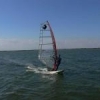


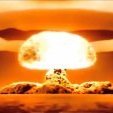



.thumb.jpg.d17ff607fc7e89ed057e63fcb6f2a888.jpg)
